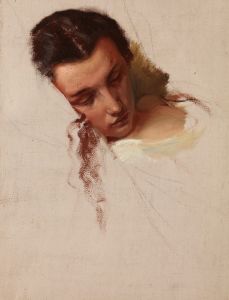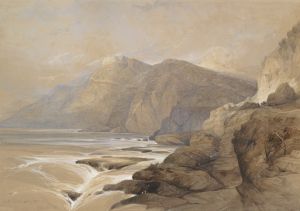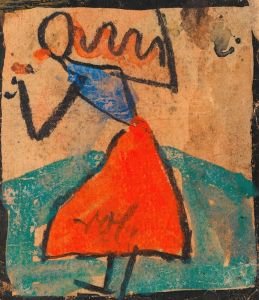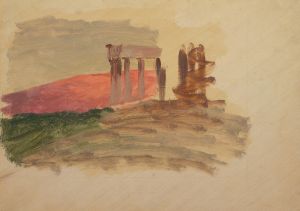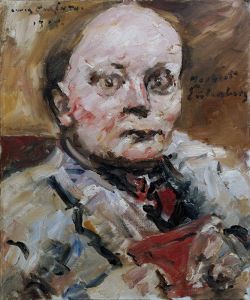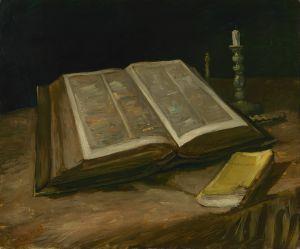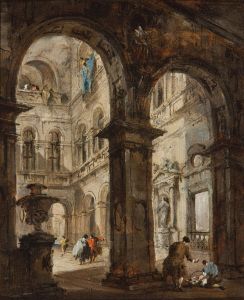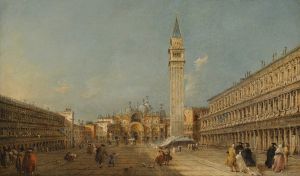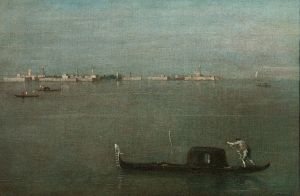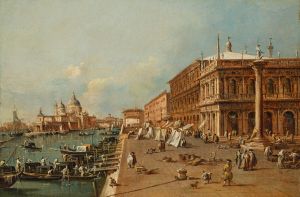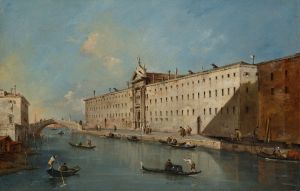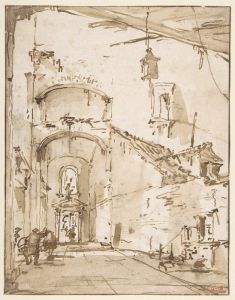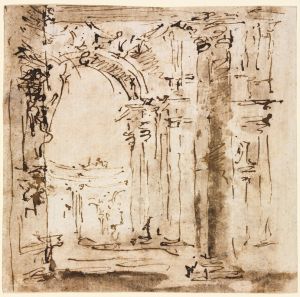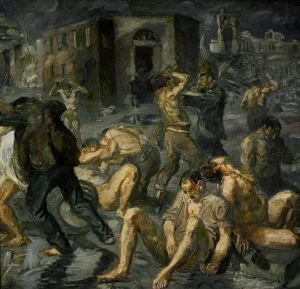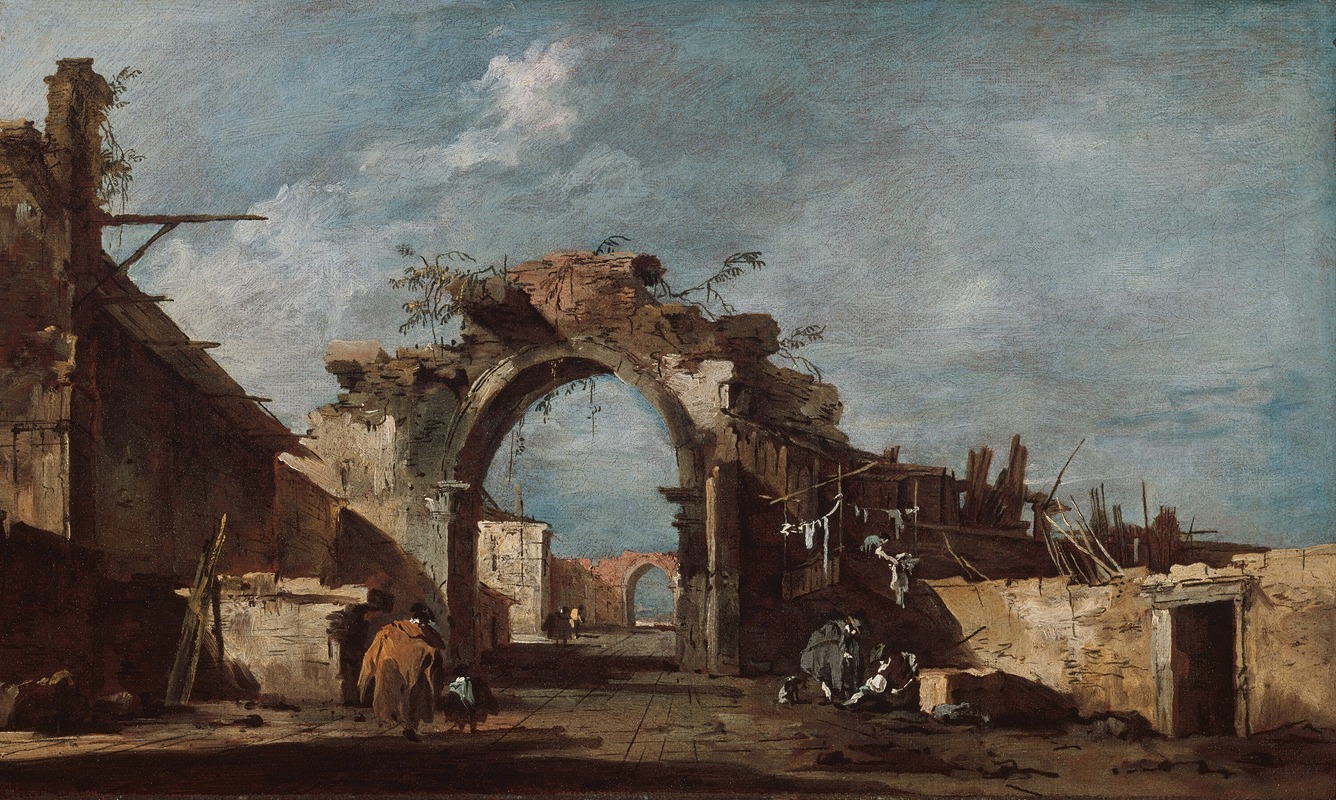
Ruined Archway
A hand-painted replica of Francesco Guardi’s masterpiece Ruined Archway, meticulously crafted by professional artists to capture the true essence of the original. Each piece is created with museum-quality canvas and rare mineral pigments, carefully painted by experienced artists with delicate brushstrokes and rich, layered colors to perfectly recreate the texture of the original artwork. Unlike machine-printed reproductions, this hand-painted version brings the painting to life, infused with the artist’s emotions and skill in every stroke. Whether for personal collection or home decoration, it instantly elevates the artistic atmosphere of any space.
Francesco Guardi (1712-1793) was an Italian painter from Venice, renowned for his vedute, or detailed paintings of cityscapes. One of his notable works is "Ruined Archway," which exemplifies his skill in capturing the atmospheric effects and the romantic decay of architectural structures.
"Ruined Archway" is a painting that depicts a dilapidated archway, surrounded by remnants of classical architecture. Guardi's work is characterized by its loose brushwork and a keen sense of light and shadow, which imbue the scene with a sense of nostalgia and poetic melancholy. The painting reflects the 18th-century European fascination with ruins, which were often seen as symbols of the passage of time and the transience of human endeavors.
Francesco Guardi was part of a prominent family of painters. His brother, Gian Antonio Guardi, was also a well-known artist, and the two often collaborated on various projects. Francesco Guardi's style evolved over his career, moving from the more precise and detailed approach of his early works to the more impressionistic and atmospheric style seen in "Ruined Archway."
The painting is a fine example of Guardi's mature style, where he focused more on the overall impression of the scene rather than the meticulous details. This approach allowed him to convey the mood and atmosphere of the setting more effectively. The use of light in "Ruined Archway" is particularly noteworthy, as Guardi skillfully contrasts the bright, sunlit areas with the darker, shadowed parts of the ruins, creating a dynamic and engaging composition.
"Ruined Archway" also reflects the influence of other Venetian painters, such as Canaletto, who was known for his precise and detailed cityscapes. However, Guardi's work is distinguished by its more expressive and emotive qualities, which set it apart from the more topographical approach of Canaletto.
The painting is part of a larger body of work by Guardi that includes numerous views of Venice and its surroundings. These works are celebrated for their ability to capture the unique atmosphere of the city, with its interplay of light and water, and the grandeur of its decaying architecture. Guardi's paintings are considered an important part of the Venetian vedute tradition, and they continue to be admired for their artistic and historical significance.
Today, "Ruined Archway" is housed in various collections, including museums and private collections, where it is appreciated by art enthusiasts and scholars alike. The painting remains a testament to Francesco Guardi's talent and his ability to evoke the beauty and poignancy of the past through his art.





